|
Jensen Commercial
Vehicles
Jensen was founded by two brothers,
Alan and Richard Jensen who were born in 1906 and 1909.
They became interested in cars at an early age, and so
in 1930 their father set them up in their first
business, Patrick Jensen Motors, based at Edgbaston.
They ran the business with Joe Patrick, but left during
the following year after a disagreement.
In 1931 they started work at W. J.
Smith & Sons, an old established firm of motor body
builders, located in High Street, Carters Green, West
Bromwich. Smiths specialised in bodywork for lorries and
cars. After William Smith’s death the brothers took over
the business, and in 1934 it became Jensen Motors
Limited.
The business initially concentrated
on producing custom-built car bodies for chassis made by
a range of manufacturers including Morris, Singer,
Standard, and Wolseley. In 1936 Jensen's first car, the
“White Lady” appeared, and three years later the
company's first lorry, the Jensen lightweight
truck was launched. Built for Reynolds Tubes, it used
aluminium alloys, and was powered by a 4.7 litre Perkins
diesel engine. It had a 5-speed Moss gearbox.
During World War 2 the firm
concentrated on war work, building components for
military vehicles, including turrets for tanks.
Conversions were also carried out on American Sherman
tanks to turn them into amphibious vehicles. |
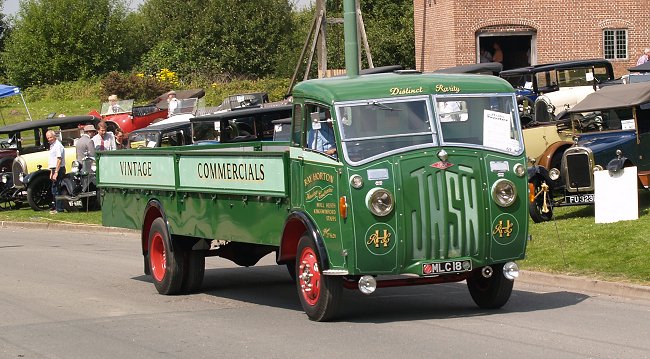
Ray Horton's JNSN Jensen lorry from 1951. At
the Black Country Living Museum in 2008.
|
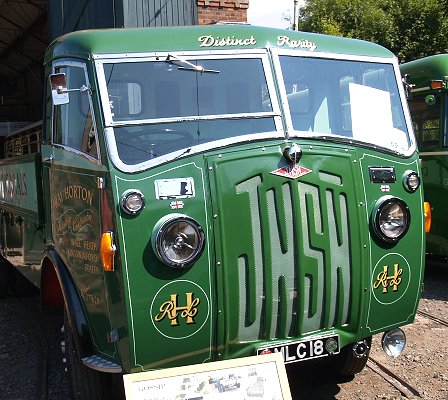
A front view of Ray Horton's
lorry. |
After the war Jensen launched another lightweight
lorry, the JNSN, which was easily recognisable by the
radiator grille, shaped to the JNSN letters.
It was available in a range of forms including
lorries, trucks, pantechnicons, and even as a luxury
coach. The vehicles sold well and remained in production
until 1956. |
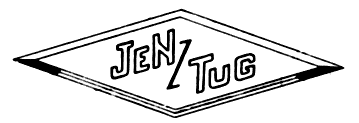
| In the late 1940s, production of another commercial
vehicle, the 'Jen-Tug' began. It was a 3 ton articulated
vehicle, available with a wide range of trailers,
including a flat trailer, a wire-sided trailer, a box
trailer, a tipping trailer, a shallow tipping trailer, a
high-sided trailer, a swan-neck trailer with winch, and
a container. The cab had an Austin A.50 four-cylinder,
overhead valve petrol engine, with a capacity of 1.5
litres, and an output of 50 b.h.p. at 4,400 r.p.m. It
had a built-in four-speed synchromesh gearbox, a Borg &
Beck, single dry-plate 8 inch hydraulically operated
clutch, and was mounted on an easily removeable
sub-frame. It also had powerful Girling hydraulic brakes
with 11 inch diameter drums on both the tractor and
trailer, a Jensen patent tractor coupling, operated from
the cab, and a turning circle of 22 feet. |
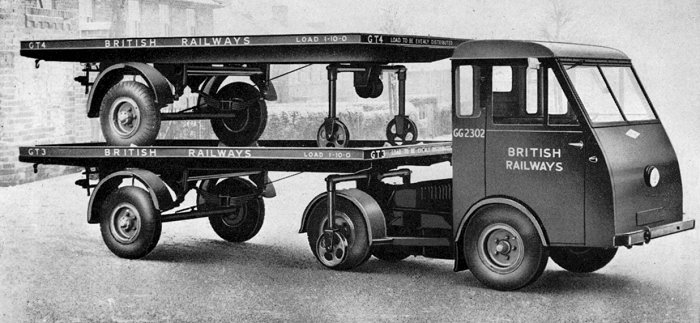
A 'Jen-Tug' with a flat bed trailer. From
the Jensen sales literature.
| The 'Jen-Tug' became quite popular, and was
supplimented by an electrically-powered version, the
'Jen-Helec'. The vehicles were made at West Bromwich,
and also in Jensen's factory at Stoke.
Jensen also built a number of German 'Tempo' 26 cwt.
front-drive trucks under licence, and bodies for the
four-wheel drive Austin Gipsy. |
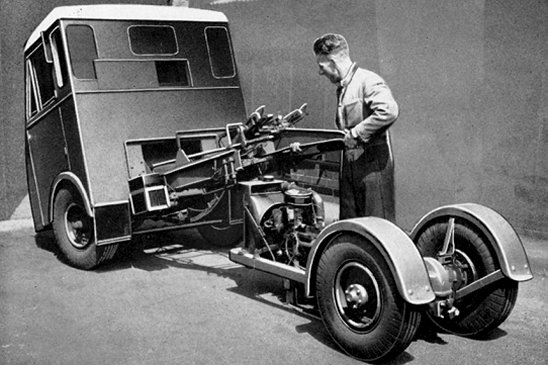
The lightweight cab with the
engine sub-assembly removed for servicing. From the
Jensen sales literature. |
| In 1956 Jensen moved to a new purpose built factory
in Kelvin Way, West Bromwich where they not only made
cars but also continued to make car bodies for other
manufacturers, over 1,000 people were employed there. In
the late 1950s Jensen was taken over by the Norcross
Group which led to an awkward relationship between
Norcross and the Jensen brothers, who retired from the
business in 1966. In the late 1960s Jensen lost its
most important car body contract, when the Austin Healey
was discontinued. The company soon found itself in deep
financial trouble, which resulted in cost-cutting and a
large number of redundancies. A receiver was appointed
in September 1975, and production was maintained until
Jensen Motors Limited went into liquidation in May
1976.It was sold in two parts to a holding company,
Britcar Holdings. The two parts were Jensen Special
Products Limited, and Jensen Parts and Service Limited. |
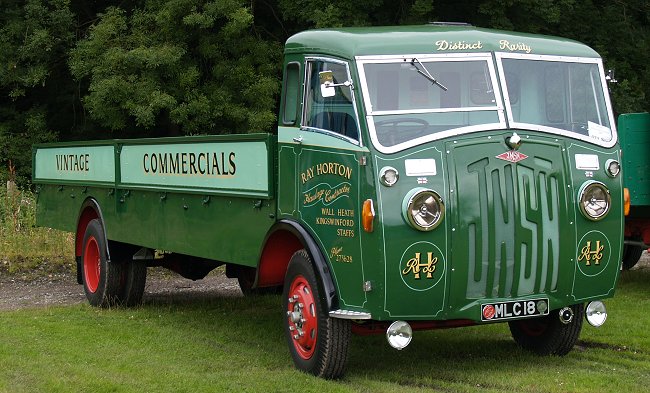
Another view of Ray Horton's JNSN lorry at the
Black Country Living Museum.
|
Jensen Special Products Limited was
a specialised engineering and design company, mainly
formed from Jensen’s development department.
Unfortunately the venture failed after an unsuccessful
management buy-out. Jensen Parts and
Service Limited had been formed to service and renovate
Jensen cars. It became quite profitable and began to
import Subaru, and later Hyundai cars. Company employee
Ian Orford, who had purchased the right to the Jensen
brand name, took the business over in 1982 and it became
Jensen Cars Limited. He decided to restart production of
the ‘Interceptor’ car using the original jigs and
readily available components. The car sold for around
£45,000, but production never really got underway and
only a few were built.
In 1988 Ian Orford sold the
business to Unicorn Holdings of Stockport, but the
venture quickly failed, and a receiver was appointed in
1992. This resulted in the closure and sale of the
Kelvin Way Site. In April 1993 Martin Robey, a
manufacturer of Jaguar body spares in Nuneaton purchased
the design rights, copyrights, tooling, stock of parts,
and almost the entire contents of the works. Some of the
remaining Jensen staff joined the Nuneaton workforce and
the business became Martin Robey Sales Limited. Their
Jensen and Jensen Healey works Parts Department still
offers parts from the original Jensen stock, and also
manufactures parts using the original tooling and
specifications.
In 1998 Creative Design Limited of
Redditch developed a new Jensen car, the ‘S-V8’.
Although a few were built, the project was unsuccessful
and ended in 2002. |
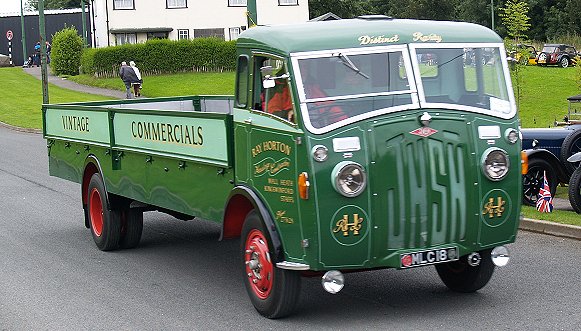
A final view of Ray Horton's lorry.
 |
Return to
the list
of manufacturers |
|